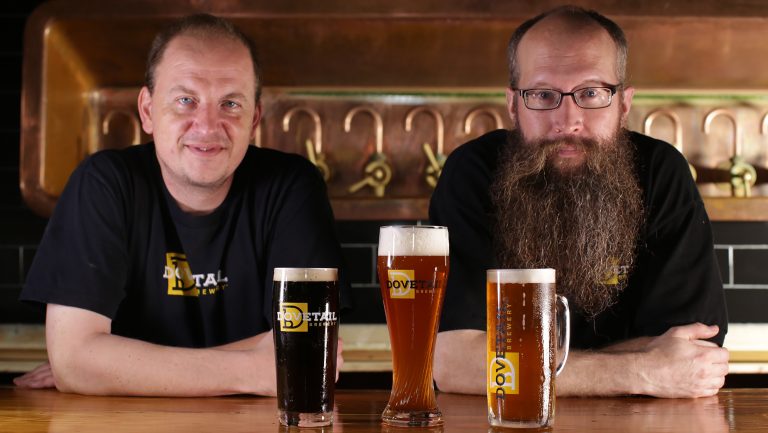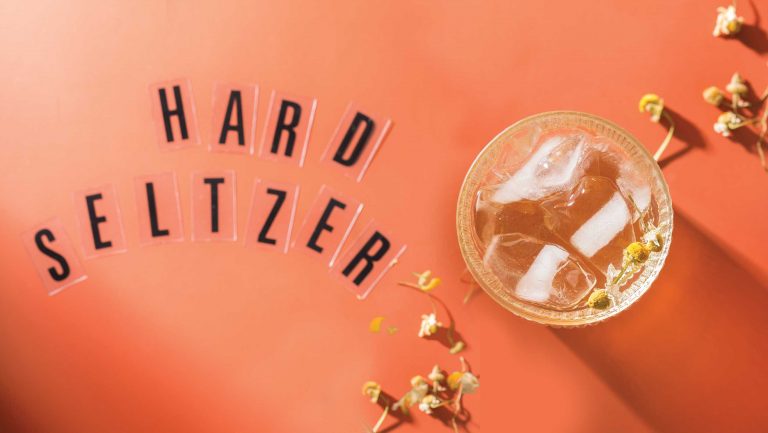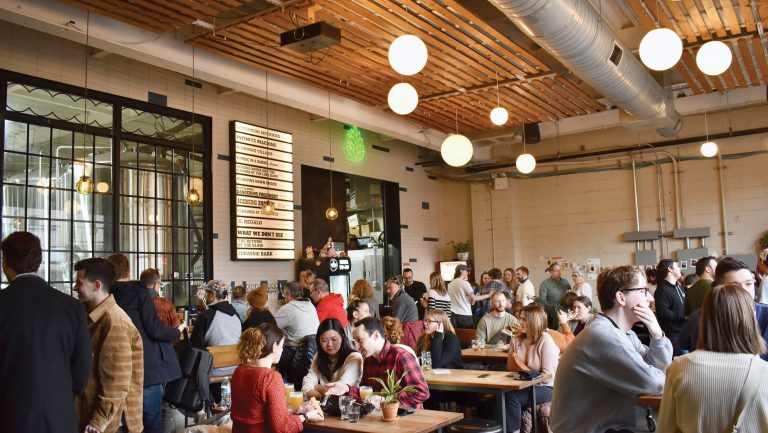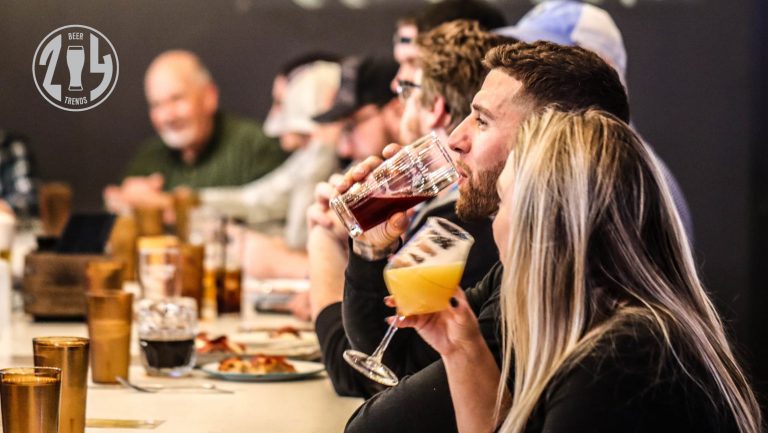In a world overrun with IPAs, Live Oak Brewing, located outside Austin, Texas, sprints in a different direction. The brewery, founded in 1997, focuses on European pilsners, hefeweizens, and, notably, smoky old-world beers.
Live Oak’s lineup regularly includes Schwarzer Rauch, a smoldering black lager; the German-style acidic, campfire-scented Lichtenhainer; and the Polish-style low-ABV Grodziskie, made with oak-smoked wheat malt and so effervescent that it’s nicknamed Polish champagne.
“Many people think that they don’t like smoked beers until they try ours,” says Chip McElroy, Live Oak’s owner and founder, who so loves Grodziskie that he canned it instead of the brewery’s IPA.

Don’t miss the latest drinks industry news and insights. Sign up for our award-winning newsletters and get insider intel, resources, and trends delivered to your inbox every week.
Released in January 2018, Grodziskie six-packs ($9) have found fast homes in Texas liquor and grocery stores—a smoke signal amid the thickets of IPAs. Though it might seem folly to sell a 3% ABV smoked beer, McElroy says that “people are actually drinking it.”
Smoke might be beer’s final, and most divisive, flavor frontier. Customers delight in sour ales, go wild for Norwegian yeast strains, and embrace beers without bubbles. Smoke is either loved or loathed, with no happy middle ground.
But as breweries embrace a more nuanced approach to smoked beer, they’re finding fresh audiences and retail opportunities at bars, restaurants, and tasting rooms. Sometimes all it takes is a single taste to rewire misperceptions, for an old brew to taste thrillingly new.
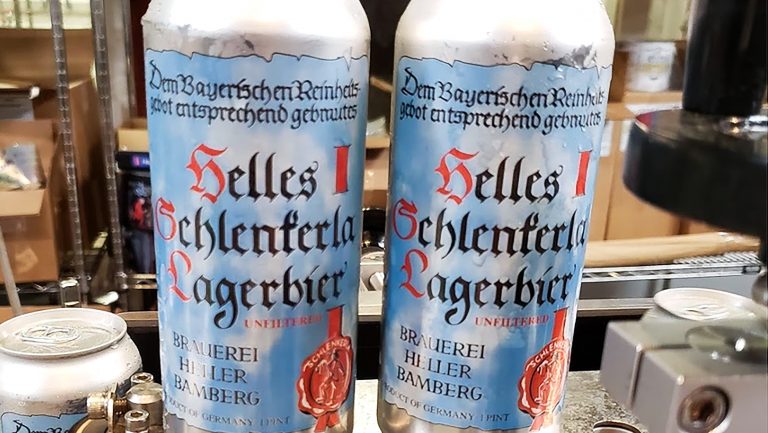
Lighting a Fresh Fire
All beer was once smoky. For centuries green malt was dried over fires, smoke fumigating the grain. Refined kilning methods (think of roasting coffee) that were developed in the early 19th century largely cleared the smoke, save for breweries in Bamberg, in Germany’s Franconia region.
Brewers in that area specialize in rauchbier (rauch is German for “smoke”), and no maker is more famous than Brauerei Heller-Trum. It uses beechwood-smoked malt to make Aecht Schlenkerla Rauchbier Märzen and Rauchbier Urbock (both around $5 for a 500-milliliter bottle).
Even for palates primed by Texas brisket or peaty Scotch, smoked beers may initially seem too intense. But Heller-Trum’s bright Schlenkerla Helles lager, which acquires its understated smokiness from the house yeast (there’s no smoked malt), has struck a retail chord.
“It has a unique aroma profile and flavor that no one else has,” says Matthias Neidhart, the founder of B. United International, which imports Schlenkerla beers. The Helles is resonating with customers craving low alcohol and big flavor—two large trends—and sales are up 20 percent over last year.
Credit the beer’s success to a format shift. B. United sails the lager to the U.S. in temperature-controlled containers, then packages the Bamberg-fresh beer at its Connecticut facility in 16-ounce cans ($16 to $18 per four-pack).
“That [packaging] changed everything,” Neidhart says, noting that Helles—first canned in 2017—has become B. United’s top Schlenkerla brand.
At Covenhoven, a beer bar and retail shop in Brooklyn, New York, the refrigerators contain trendy IPAs and imperial stouts—and Schlenkerla Helles cans. Covenhoven’s beer buyer, Tom Beiner, says the Helles beer appeals to “pilsner drinkers that are going back to traditional styles.”
Covenhoven sells at least a case of Schlenkerla Helles cans monthly. Moreover, Beiner is rotating in other smoked beers on tap, such as Stand to Reason, a German-style rauchbier from Suarez Family Brewery in Hudson, New York (around $8 per pint).
“I was afraid it wasn’t going to kick,” he says of finishing the keg, “but I was pleasantly surprised when we sold out.”
Dampen the Inferno
The resurgent appeal of smoked beer can be traced to a single word: restraint.
Restraint hasn’t always been a strength of American brewers; many treated smoky beers as an invitation to excess. Take Mangalitsa Pig Porter from Right Brain Brewery in Traverse City, Michigan. The namesake ingredient is—no joke—smoked pig heads.
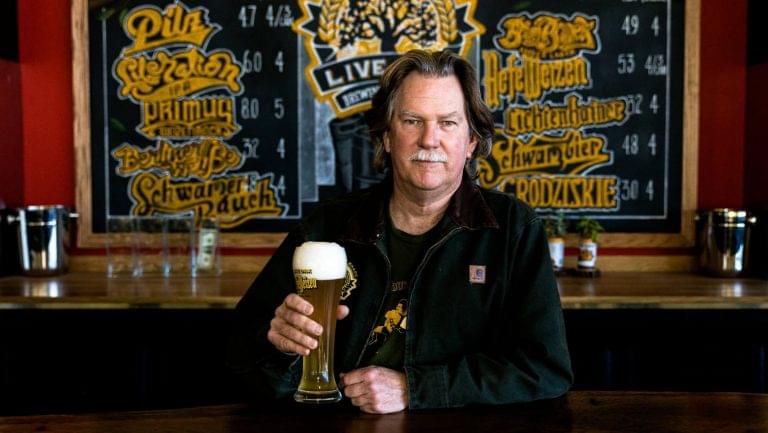
“The problem with smoked beers in the past,” McElroy, “is that people thought the only thing they could add smoke to was a big beer.”
Hagen Dost, a brewer and owner at Dovetail Brewery in Chicago, has seen the prejudice against the excessive style firsthand. “When most people walk into our taproom and see a smoked beer on the menu,” he says, “they go, ‘No, I don’t like smoked beers.’”
Dovetail’s European-influenced beers, though, favor balance over bombast. Its rauchbier calibrates smoke with bitterness, roastiness, and chocolate malt, none of which are too overwhelming.
When customers can’t make a choice, bartenders will pour a few samples, sneaking in the rauchbier ($7 per half liter). “A surprising number of people go for it,” Dost says, noting that many people order a second round. “It’s not what they were expecting.”
Fort Point Beer Company, in San Francisco, has seen its smoked beer, Manzanita, become a culinary plaything. Inventive ice cream shop Humphry Slocombe has incorporated Manzanita into ice cream, while a local pastry chef put the beer in gingerbread cake. “People get excited to use it as an ingredient,” says Mike Schnebeck, Fort Point’s director of brewing.
Like so many good ideas, Manzanita was inspired by a walk. Schnebeck was hiking in Northern California when he spotted a twisty manzanita tree and wondered how the wood might flavor beer. In January 2014, shortly before Fort Point opened, Schnebeck collaborated with Freigeist in Stolberg, Germany, on a beer built with beechwood-smoked malt and steeped with several charred manzanita logs to give layers of smoky flavor that are present but never pummeling.

“It’s very much a gateway smoked beer,” Schnebeck says of Manzanita, which is now a fall seasonal offering, released in October ($12 per six-pack), that’s regularly sold at restaurants, including BBQ spots.
The key, then, is to introduce drinkers gradually to a smoldering complexity. A subtle approach is exemplified by Smoke & Dagger (around $12 for a six-pack of 16-ounce cans) from Jack’s Abby in Framingham, Massachusetts, and the Cabin (around $15 for a four-pack of 16-ounce cans) from Fox Farm Brewery in Salem, Connecticut.
Smoked beer might not immediately set the beer world aflame, but a slow, steady burn is a good starting point. “It’s a matter of education,” says Live Oak’s McElroy. “All you’ve got to do is put it in front of people, and then they’ll understand.”

Dispatch
Sign up for our award-winning newsletter
Don’t miss the latest drinks industry news and insights—delivered to your inbox every week.
Contributing editor Joshua M. Bernstein is a beer, spirits, food, and travel journalist, as well as an occasional tour guide, event producer, and industry consultant. He writes for the New York Times, Men’s Journal, New York magazine, Wine Enthusiast, and Imbibe, where he’s a contributing editor in charge of beer coverage. Bernstein is also the author of five books: Brewed Awakening, The Complete Beer Course, Complete IPA, Homebrew World, and Drink Better Beer.

